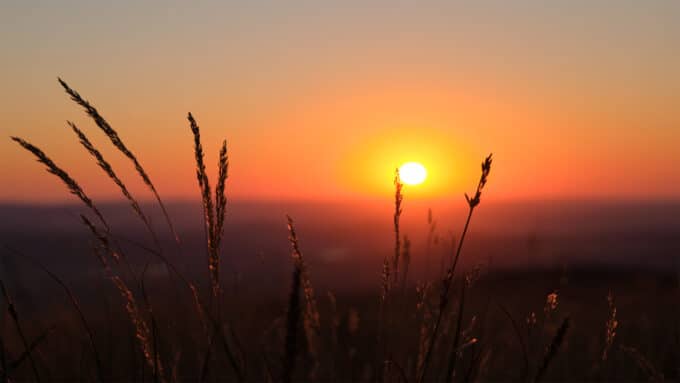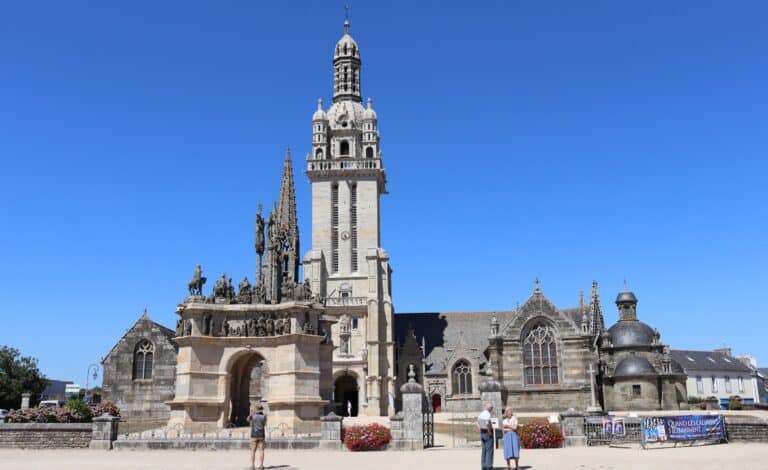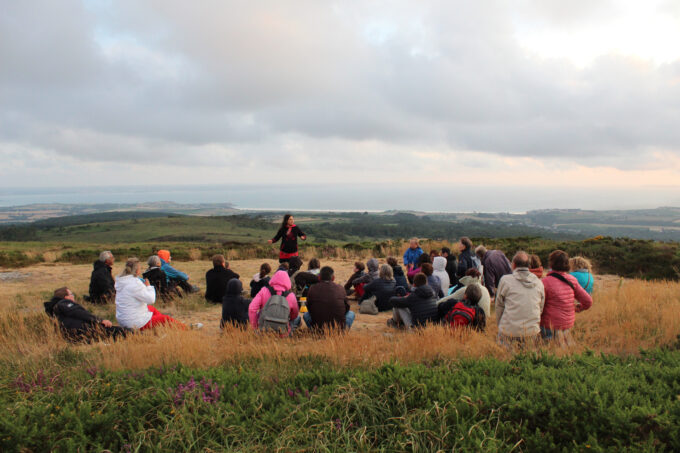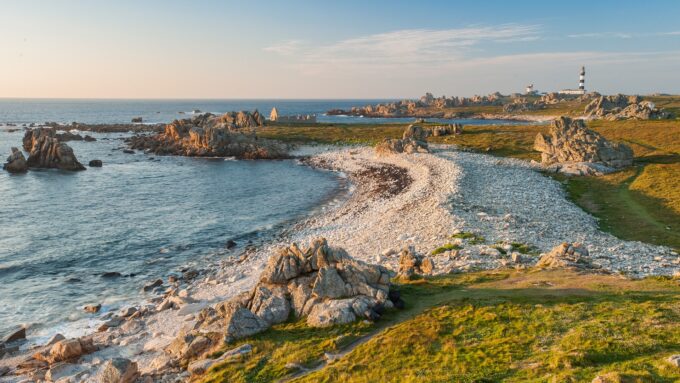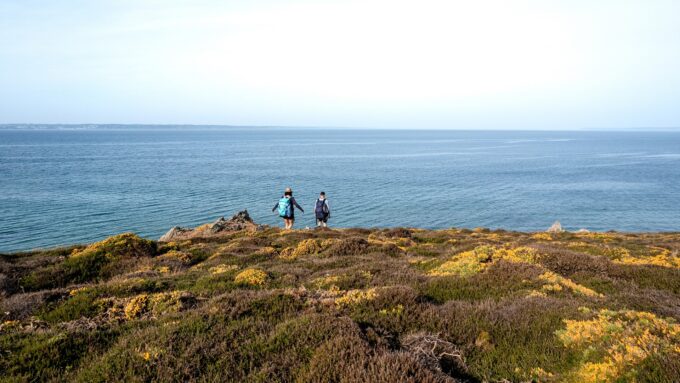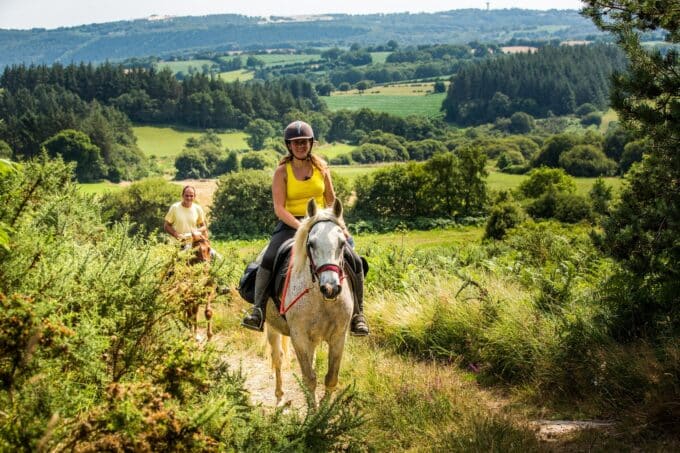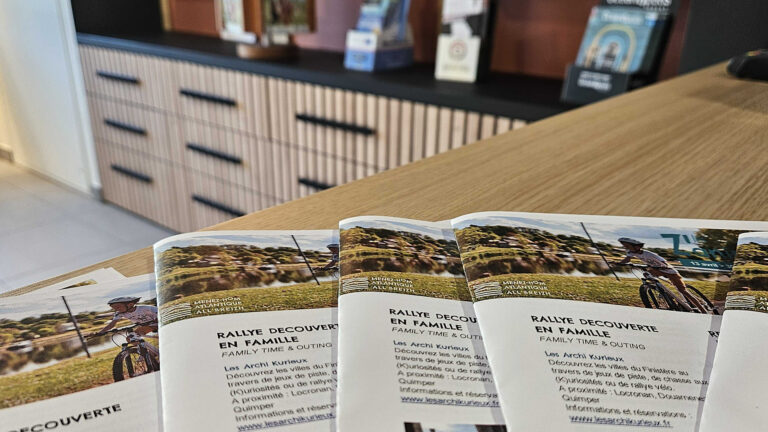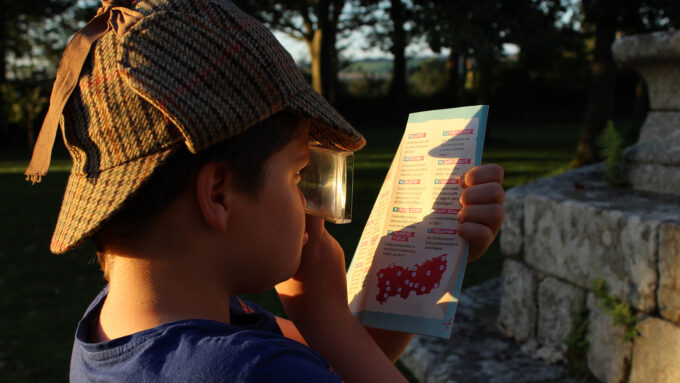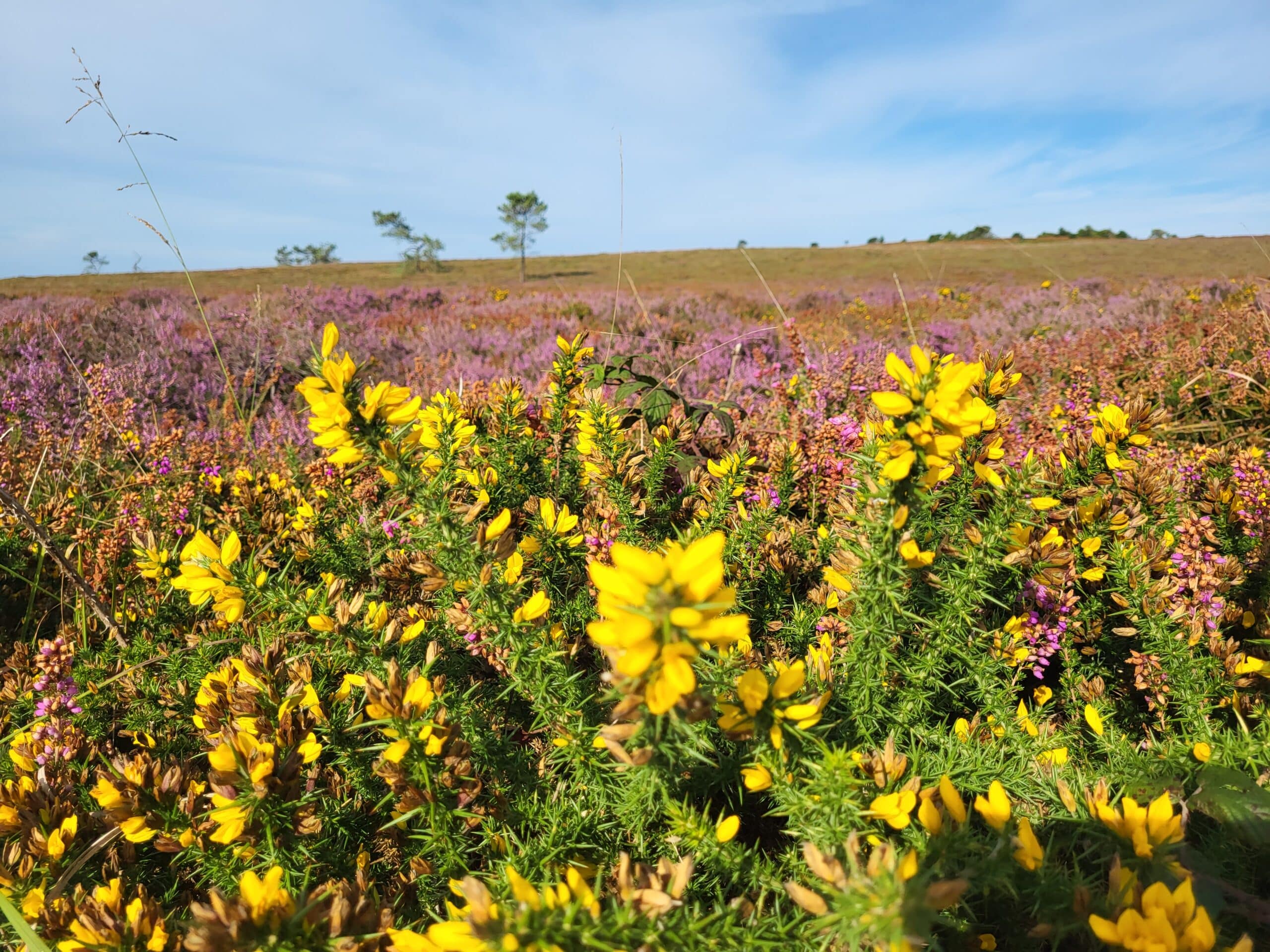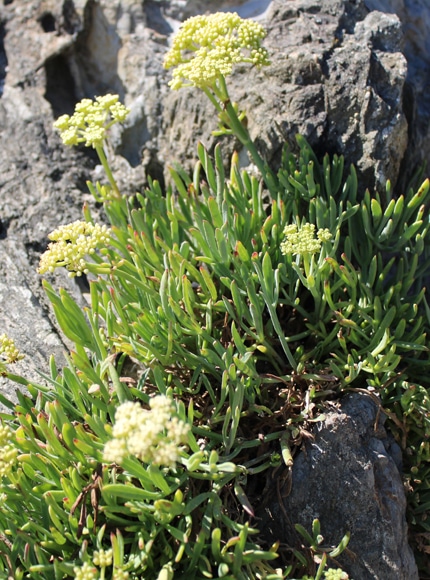
A PLANT WITH MULTIPLE BENEFITS
Criste Marine
Also known as stonewort, this typical coastal plant thrives on rocks and cliffs. Its roots find their way into the smallest crevices. Sea fennel(Crithmum maritimum) is both a medicinal and a food plant. Rich in iodine, it is a tonic, digestive, vermifuge and thyroid regulator. Its fleshy leaves and fruits can also be eaten raw. But be careful when picking! It's forbidden to pick more than a handful per person per day.
DUNE THISTLE
Panicaut maritime
On the dune, it doesn't go unnoticed with its magnificent bluish-mauve flowers and very thorny leaves. Maritime panicum(Eryngium maritimum) is also known as blue thistle or dune thistle. The Conservatoire du Littoral has made it its emblem. It's out of the question to pick this plant to decorate your coffee table. Picking it is strictly forbidden: this plant is protected in Brittany and other coastal regions.
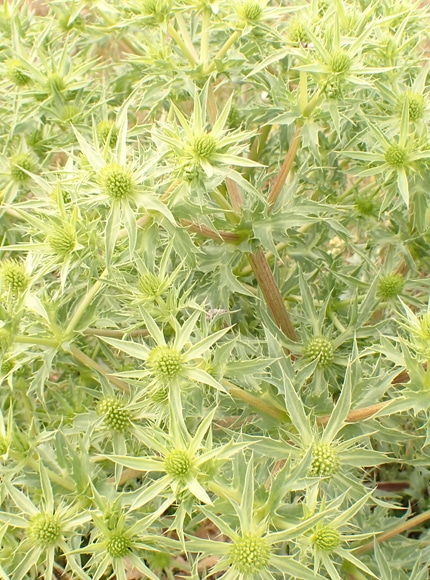
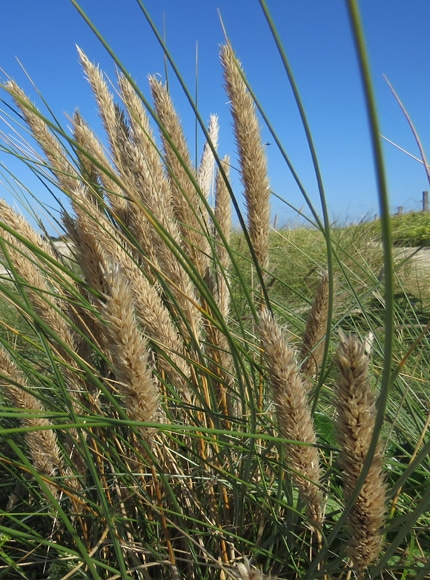
AN ASSET FOR THE DUNES
Oyat
Little attention is paid to this typical Atlantic and Mediterranean coastal grass. And yet, the oyat(Ammophila arenaria) plays a fundamental role in the formation and fixation of dunes. Its underground stems (rhizomes) spread out in all directions, fixing the sand in place. The oyat is remarkably resistant to silting up, but also to the dryness caused by regular winds. To maintain a certain level of humidity, it rolls up its leaves.
A STRONG PLANT!
Sand Arrow
Few plants are able to thrive on the sea leash, the area at the top of the beach where seaweed, driftwood and crustaceans wash up... The sand arrowroot(Atriplex laciniata) flourishes there in spring. This plant can be recognized by its elongated, silvery leaves on both sides and tiny flowers. The leaves can be eaten raw or cooked. They have a slightly salty taste.
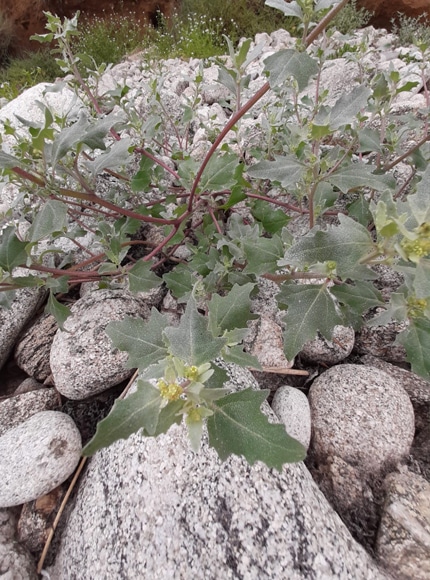
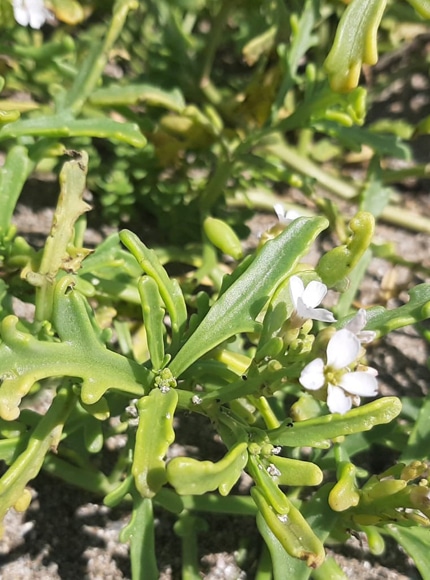
AT THE TOP OF THE BEACHES!
Sea quail
With its pretty white or pink flowers, it's instantly recognizable. The sea cucumber(Cakile maritima) grows on the top of beaches in the company of arrowroot and marram grass. This coastal plant belongs to the Brassicaceae family (=crucifers) like cabbage or mustard. When you bite into one of its fleshy, juicy flowers, or its delicate blossoms, you immediately recognize its kinship: caquillier has a pungent, sulfurous taste. So it's easy to spice up a salad!
SO TYPICAL!
Ciliated heather
Its pretty mauve bell-shaped flowers, hanging from one side only, light up the moors and the summit of Menez Hom in particular. The ciliated heather(Erica ciliaris) is a small shrub up to 80 cm tall that doesn't shed its leaves. It grows in both dry and wet heaths. It can easily be confused with two other typical heaths: four-cornered heather(Erica tetralix) and ash heather(Erica cinera). The former prefers wet heaths, the latter dry ones.

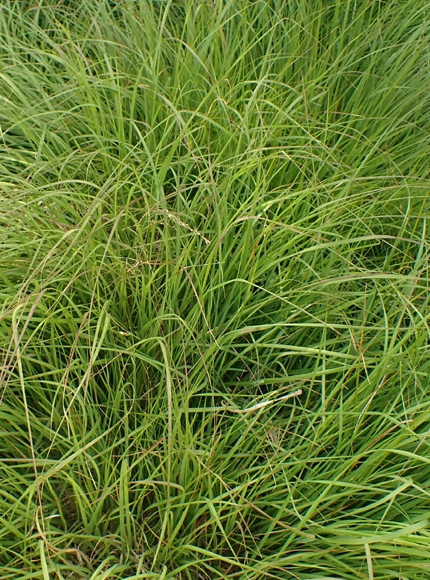
MOOR LANDSCAPE
Molinie
This plant is hardly impressive. Yet it shapes the moorland landscapes of the Atlantic Menez-Hom. Molinia(Molinia caerulea) belongs to the very large Poaceae family, formerly known as Grasses. Grasses" in popular parlance! Its flowers are tiny and petalless. Its long, stiff leaves whip your calves up and down the slopes of Menez-Hom.
INESCAPABLE
Le Gall gorse
This shrub is found only in western Brittany. Le Gall gorse(Ulex gallii) owes its name to a Rennes justice of the peace who wrote a flora of Morbihan. It lights up the Menez-Hom moors with a magnificent golden yellow from June to October. But don't rub it: its leaves have sharp thorns that would discourage even the hungriest herbivore! Ants, on the other hand, have no fear of Le Gall gorse: they disperse its seeds, well sheltered in pods.
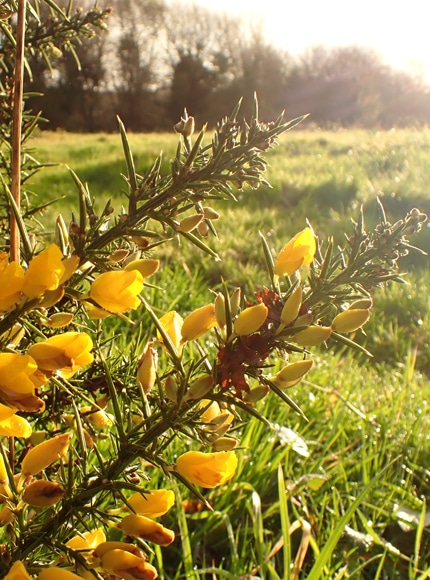
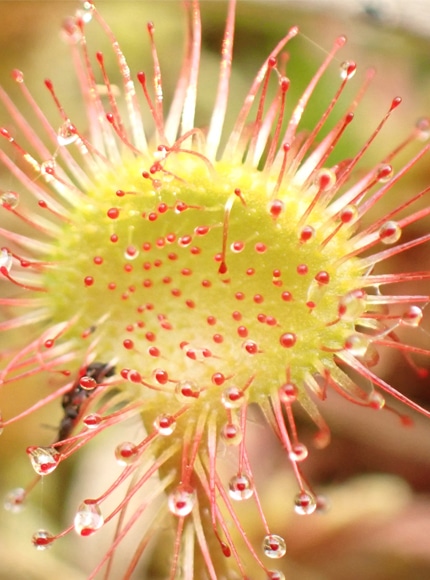
RARE AND... CARNIVORE!
Round-leaved sundew
On the peaty slopes of Menez-Hom, you can come across a carnivorous plant: round-leaved sundew(Drosera rotundifolia). This discreet herbaceous plant measures barely 20 cm, but it has developed a highly sophisticated stratagem to find a source of nitrogen. Its leaves are studded with reddish hairs that secrete a very sticky liquid. Insects are irresistibly attracted and end up stuck! Enzymes then come into play to liquefy the prey. The trap is frighteningly effective. Even so, Drosera are in danger. Picking them is forbidden. Just admire them.
MAJESTIC FERN
Royal Osmund
This fern lives up to its name: it's majestic! The Royal Fern(Osmunda regalis) is one of the largest and most beautiful ferns in the French flora. It can exceed 1.50 m in height. This species thrives in the wetlands of the Atlantic Menez-Hom, along watercourses. It is easily recognized by its two types of fronds: one fertile, composed solely of spores; the other entirely foliaceous.
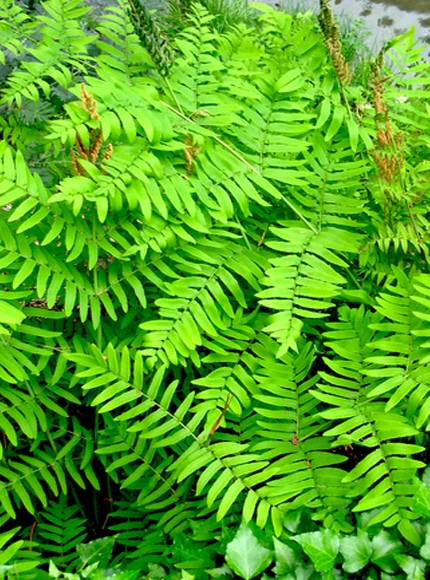
TO DISCOVER MORE ABOUT THE PLANTS OF MENEZ-HOM ATLANTIQUE
Wilderness walks and cuisine
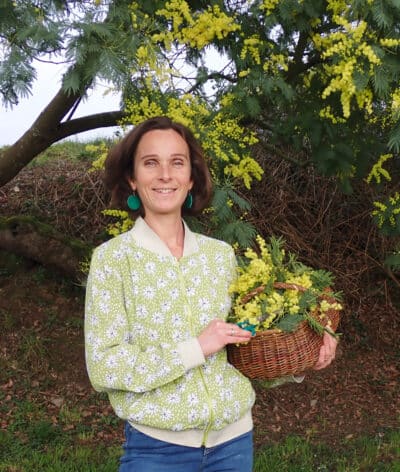
YOUR GUIDE
Passionate,
Photo credits: ©Adèle Le Berre / Bruyère Ciliée © Tela botanica Michel Pourchet
Texts: ©Adèle Le Berre



